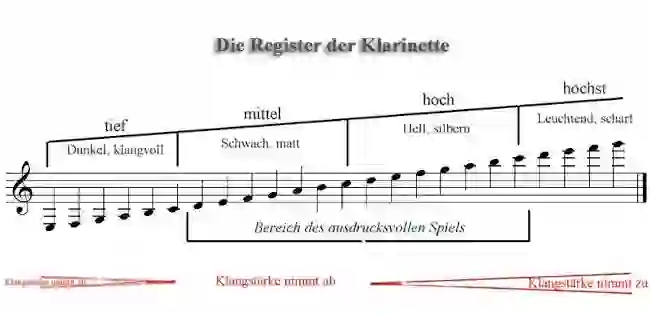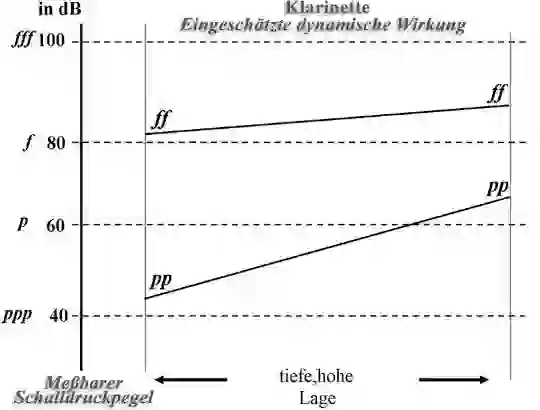Sound character of the clarinet - Philipp Dangas
Register table of the clarinet
The sound character of the clarinet is determined by the cylindrical length of its reed, by the tone generation by means of the single-reed mouthpiece and also by the tuning of the instrument.
The scale is decisive for the timbre of the clarinet. Because the clarinet is blown with a single-reed mouthpiece, the odd-numbered overtones dominate. The even-numbered ones step down instead. The sound of the clarinet is pure and clear in all registers. The influence of tuning on the sound character is particularly pronounced with the clarinet. The best acoustic conditions for the development of a balanced euphony result for the clarinet in the Bb and A tuning.
As part of the „symphonic world music“
The clarinet can contribute to the creation of a specific sound character. But also the task of creating subtle contrast in order to be able to perceive features in sound or form differently.
Download size: 857 kilobytes
Table summary of the sound character of the clarinet
The table below lists the registers and tones of the clarinet briefly described. The highest register, the middle register and the deepest registers described.
Dynamic effect of the clarinet
Sheet music for the dynamic table of the clarinetThe degrees of strength of musical dynamics are shown in the dynamic table. In addition to the sound pressure scale measured in decibels [dB], the degrees of strength of musical dynamics are given on the left, which can be understood as "objective" degrees.
The diagram to the right of the dB scale, shows it the estimated dynamic effect over the entire tonal range of the instrument. The dynamic effect (volume) as judged (perceived) by the listener.
Let's look at an example: In the low register of the trumpet, the dynamic range is between pianissimo [pp] 46 decibels [dB] and fortissimo [ff] 82 decibels [dB] = 36 decibels [dB]. In the high register, the range is 8 decibels [dB]. The estimated values can deviate more or less from the "objective" ones.
The instruments are clearly different in places with regard to the deviations. The mentioned "objective" levels of intensity piano pianissimo [ppp]= 40 decibels [dB], p=60 decibels [dB] etc. enable the composer to predict the dynamic effects of different instruments that are sounding simultaneously.
Table summary of the dynamic range of the clarinet
The following table shows the achievable dynamic range of the clarinet shown. The span is the difference between the fortissimo and the Pianissimo in the same pitch.

A large representation of the register table of a clarinet
- highest register
- Sharp and yet somewhat luminous.
- high register
- The most balanced and sonorous register
- middle register
- Matt, dull, somewhat weak sounding.
- lowest register
- Dark, rough, bassoon-like sounding.

The dynamic table of a clarinet
Internal search function
| Name | Value | Delete |
|---|